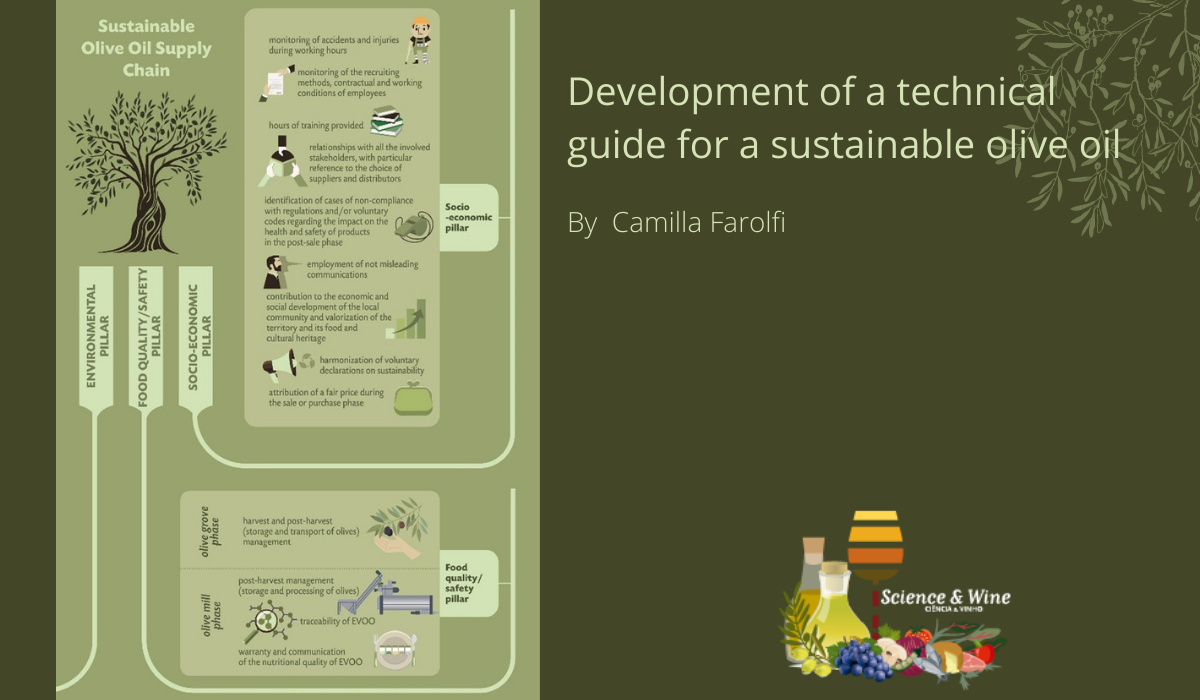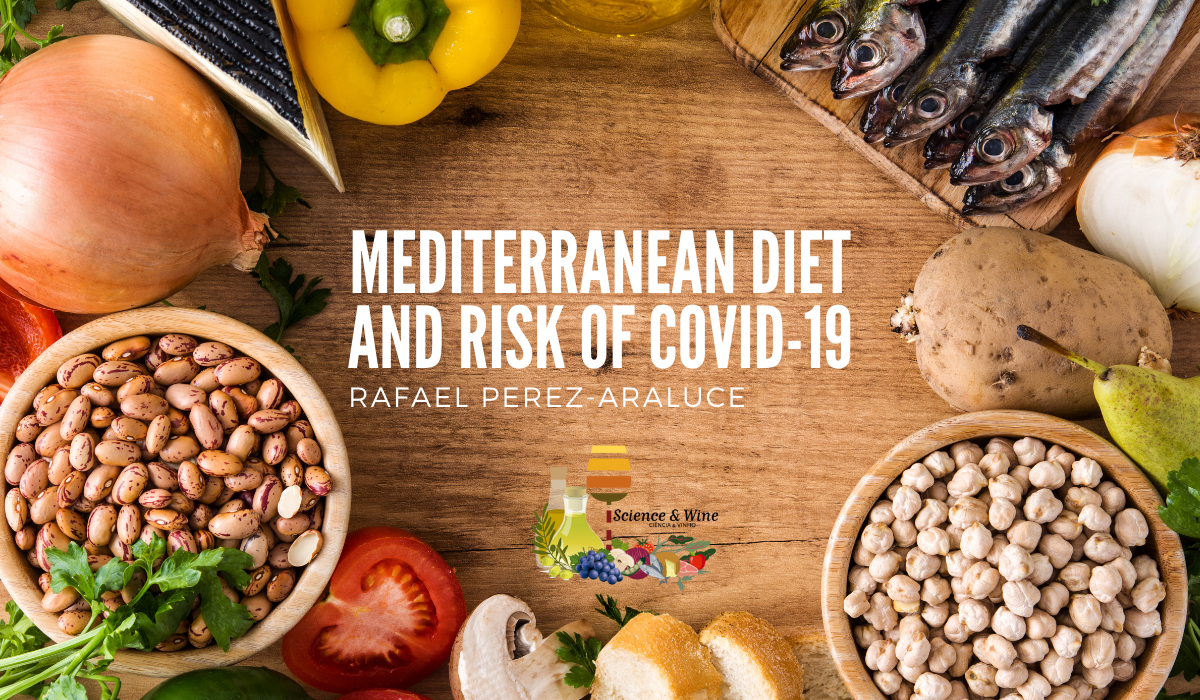Mediterranean dietary pattern is more important than that of its individual food groups. On one hand, for some foods, there was not a big difference between the most extreme consumption categories; therefore, the effect of high or low consumption would be more difficult to be observed. As more foods are included, these differences will grow. On the other hand, although we found a significant inverse association between dairy products and COVID-19, the effect of the Mediterranean diet is the combined effect of all its components, which can combine and enhance each other. Undoubtedly, the recommendation of a complete pattern is much more effective than that of isolated foods.

Cardioprotective Effects of Olive Oil
Cardiovascular diseases (CVDs) are still the leading cause of death and disability worldwide, and they could be prevented by a diet modification and a healthy lifestyle. Dietary modifications include a reduction in the consumption of saturated fatty acids and replacing them with mono or polyunsaturated fatty acids. Olive oil is a monounsaturated fatty acid, and its increased consumption has been associated with a significant reduction of CVDs

Development of a technical guide for a sustainable olive oil
Italian olive growing must aim at the transition to economically and environmentally sustainable management systems, linked to premium quality production and to a recognized and remunerated context of biodiversity conservation in compliance with the provisions of the European Union New Green Deal and United Nations Agenda 2030. To assist and facilitate companies in this step, a sustainability technical guide for the Italian olive oil supply chain has been developed, with reference to the four pillars of sustainability.

Olive mill wastewater powder: a rich source of phenolic compounds
The processing of olives for oil production generates the most abundant agro-industrial by-products in the Mediterranean area. The three-phase olive oil extraction process requires the addition of a large amount of water to the system, which is difficult to dispose of for its load of toxic pollutants. On the other hand, olive mill wastewater is a rich source of bioactive substances with various biological properties that can be used as ingredients in the food industry for obtaining functional and nutraceutical foods as well as in the pharmaceutical industry. In this study, we present the results relative to the phenolic compounds detected in dried olive mill wastewaters obtained using a spray dryer. The results obtained highlighted that the use of dehumidified air as a drying medium, with the addition of maltodextrin, appears to be an effective way to produce a phenol-rich powder to be included in food formulations as well as in pharmaceutical preparations having different biological properties.

Novel hydroxytyrosol-donepezil hybrids as potential antioxidant and neuroprotective agents.
It is well-accepted that the endogenous antioxidant protection system progressively decays in elderly people, and that the oxidative stress contributes to different neurodegenerative disorders such as Alzheimer’s Diseases (AD). The lower incidence of AD in countries which feature the Mediterranean Diet was associated to the high consumption of extra virgin olive oil and its polyphenolic fraction, in particular hydroxytyrosol. The protective role of these bio-phenols against oxidative stress, suggested that we combine their antioxidant/free radical scavenging activity with donepezil, an active ingredient which has just been approved for the treatment of AD.

Antimicrobial activities of virgin olive oils in vitro and on lettuce from pathogen-inoculated commercial quick salad bags
Virgin olive oil (VOO) provides an important source of healthy compounds. Its high concentrations of monounsaturated fatty acids and phenolic compounds contribute toward its nutritional, antioxidant, and antimicrobial properties. VOO is used in the preparation of many dishes worldwide and forms a staple of the Mediterranean diet; however, the antimicrobial activity of VOO in food matrices has been investigated very little to date. Considering this and the growing demand to reduce the use of synthetic antimicrobials and chemical food preservatives, especially in minimally processed foods, the aim of this work was to evaluate the antibacterial activity of VOOs obtained from 13 different Italian olive varieties. This study provides evidence supporting that VOOs with determinate polyphenols profiles might be used as antimicrobial ingredients in minimally processed foods to significantly reduce the presence of pathogenic bacteria.

Pitted drum-dried olive pomace: A source of healthy phenolics and fiber for food and feed applications
Olive pomace (OP) is the main by-product of olive oil extraction. After pit and skin removal, OP pulp has high concentrations of dietary fiber and phenolics with high antioxidant capacity. This study evaluated mice health benefits of drum-dried pitted OP pulp obtained after first and second oil extraction. Drum-dried pitted olive pomace can be produced from first or second olive oil extraction byproducts to be used as a shelf-stable healthy food or feed supplement.

Mediterranean Diet and Breast Cancer
This post reports the results of the first randomized trial finding an effect of a long-term dietary intervention on breast cancer incidence. The results suggest a beneficial effect of a Mediterranean diet supplemented with extra-virgin olive oil in the primary prevention of breast cancer. These results come from a secondary analysis of a previous trial and are based on few incident cases and, therefore, need to be confirmed in longer-term and larger studies.

Olive mill wastewater as a functional resource of bioactive compounds for Agro-Food Industries
Olive oil production represents an agro-industrial activity of vital economic importance for many Mediterranean countries. However, it is associated with the generation of a huge amount of by-products, both in solid and liquid forms, mainly constituted by olive mill wastewater, olive pomace, wood, leaves, and stones. Although for many years olive by-products have only been considered as a relevant environmental issue, in the last decades, numerous studies have deeply described their antioxidant, anti-inflammatory, immunomodulatory, analgesic, antimicrobial, antihypertensive, anticancer, anti-hyperglycemic activities. Therefore, the increasing interest in natural bioactive compounds represents a new challenge for olive mills. Studies have focused on optimizing methods to extract phenols from olive oil by-products for pharmaceutical or cosmetic applications and attempts have been made to describe microorganisms and metabolic activity involved in the treatment of such complex and variable by-products. However, few studies have investigated olive oil by-products in order to produce added-value ingredients and/or preservatives for food industries. This post is based in a review which provides an overview of the prospective of liquid olive oil by-products as a source of high nutritional value compounds to produce new functional additives or ingredients and to explore potential and future research opportunities.

Influence of low temperature and cultivar on mechanical extraction of high quality virgin olive oil
The malaxation step, one of the most important phases of the virgin olive oil (VOO) mechanical extraction process involved in the development of the main quality characteristics of the final product, was carried out at a low temperature (18 °C). The rapid control of malaxer temperature was handled with the same chiller as that of the heat exchanger used in a semi-industrial extraction plant. Low temperature was used during the full olive paste kneading process and also for half of this process, which showed that there was a significant impact on the phenolic and volatile contents of VOO. Trials were conducted on three different cultivars (Canino, Moraiolo and Peranzana), and their phenolic and volatile concentrations showed different quantitative and qualitative effects due to the prolonged use of low temperature after the crushing phase, as a function of the different genetic origins of the olives. The process of phenolic compound solubilization into the oily phase was negatively influenced by the use of low temperature during the entire malaxation period for all the cultivars, whereas the volatile fraction showed an improvement in VOO flavor mainly due to the oil extracted from Canino olives.

